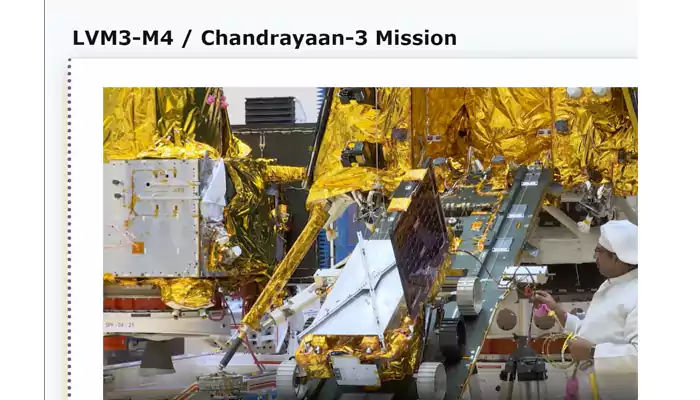
Chandrayaan-3 launched Friday, a follow up of Chandrayaan-2 mission which failed to achieve desired soft landing on the Moon's surface in 2019.
Chandrayaan-3, India’s third lunar exploration mission, was launched by the Indian Space Research Organisation (ISRO) on Friday afternoon to land a rover on the Moon's surface, a feat achieved by just three nations so far. The mission is a follow-up of Chandrayaan-2 mission, which failed a desired soft landing on the lunar surface nearly four years ago in September 2019.
Chandrayaan-3 mission consists of the main objectives of exhibiting end-to-end capability in safe landing and roving on the lunar surface. The spacecraft is expected to touchdown Moon’s south pole region on August 23. The spacecraft consists of a six-wheeled lander and rover module, configured with payloads to provide data related to the Moon's surface.
However, the rover on the lunar surface will be doing more than just gathering data. The rear wheels of the rover, named Pragyan, leave imprints of the ISRO and the national emblem, depicting the Lion Capital of Ashoka at Sarnath, on the lunar surface – symbolising its presence and leaving India’s mark behind.

The successful soft landing of the module will make India the fourth nation to have done it after the United States, the former Soviet Union and China.
Disclaimer: This Article is auto-generated from the HT news service.